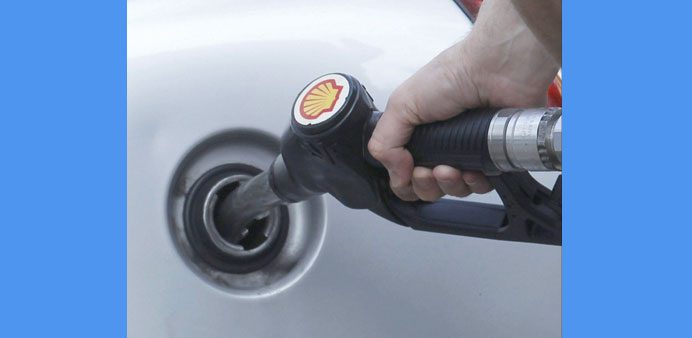The average pump price in the US rose 1.5¢ to $2.722 a gallon on Tuesday, according to AAA.
Bloomberg/San Francisco
Might want to skip that road trip to Disneyland this summer.
Gasoline is below $3 a gallon in all US regions but one: the West Coast. While oil’s recent rebound boosted pump prices everywhere, California, which consumes more gasoline than New York and Florida combined, saw the biggest surge.
Los Angeles drivers are paying over $4 a gallon, making it the most expensive place in the country to buy fuel.
There’s plenty of blame to spread around. An Exxon Mobil Corp refinery explosion near Los Angeles in February and a fire at a plant in Washington state reduced supply at the same time two other California sites make repairs. Refiners sent five cargoes in one week to Mexico. Since there are no pipelines to bring in gasoline from elsewhere in the US, tankers are delivering fuel from Asia and Europe. Add the strictest clean-air policies in the nation and you get the most expensive gas in the country.
“The Los Angeles area is ground zero for rising gas prices,” Michael Green, a spokesman for the motoring club AAA, said by e-mail May 18. “They’re rising much faster than anywhere else in the country, and they look like they’re going to remain where they are until late summer.”
The average pump price in the US rose 1.5¢ to $2.722 a gallon on Tuesday, according to AAA.
Exxon hasn’t said when its Torrance refinery will be back to normal. Repairs will continue through June, two people familiar with the plans said May 15.
Less than 10 miles up the road from Torrance, Chevron Corp shut units at the El Segundo refinery this month for repairs and Phillips 66 is doing work at its Los Angeles plant.
In Tacoma, Washington, a complex owned by the TrailStone Group remains shut after a May 6 fire.
“Prices jumped up a dollar in February, and quite frankly I’ve lost my point of reference since then,” Tom Robinson, president of the Robinson Oil Corp, which owns Rotten Robbie stations in California, said by phone May 15. “You just hope as a retailer that other people raise prices too because we can’t really afford to absorb them.”
The surge in pump prices is the latest blow for a state that’s suffering from a historic drought. It doesn’t help that the West Coast is cut off from pipeline supplies in other parts of the US Kinder Morgan Inc runs a network of lines that send fuel out of the state to Arizona and Nevada, but it doesn’t bring supplies in. So the only way refiners can deliver fuel to California is by tanker.
“California is essentially an island,” Green said. “It can’t rely on gasoline from other parts of the US, so any problems in the region lead to a surge in prices.”
That’s meant drivers on the East Coast, hooked up by pipelines to a bounty of supply from Texas and Louisiana refineries, are paying a record 88 cents a gallon less than their western counterparts, weekly Energy Information Administration data show. So few refineries produce gasoline that can be used in California’s cars that tankers come from thousands of miles away in Asia and Europe to deliver the specialised fuel.
“Asia is the closest global source of additional California-specification gasoline,” T Mason Hamilton, an EIA economist, said in a report posted on the agency’s website May 12. “It takes several weeks for resupply to reach the West Coast.”
The volatility in West Coast prices is so notorious that the Energy Department is studying how sudden fuel price surges in the region affect the US economy and whether the government should create a fuel reserve that it could tap during supply disruptions.
The average price in the US has risen 22% since the beginning of the year, AAA says. While the average will range from $2.55 to $2.75 a gallon through the summer, it’ll probably never surpass $3 this year.
Meanwhile, California is already there, averaging $3.809 a gallon on Tuesday, and so are its neighbours Nevada, Oregon and Washington, as well as Hawaii and Alaska.



